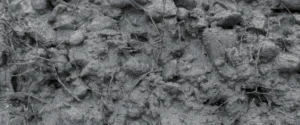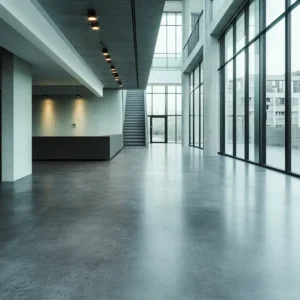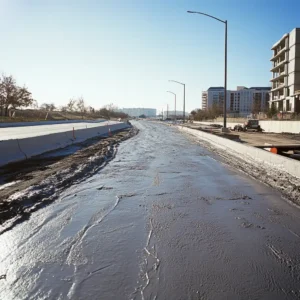As we push the boundaries of construction and design, one question often surfaces in board meetings and site offices alike: how can we enhance concrete’s toughness without piling on more steel or increasing costs? Enter macro polypropylene (PP) fibers – a game-changer in the world of concrete reinforcement.
Macro PP fibers are transforming how we think about concrete. These robust synthetic fibers increase concrete’s flexural strength, reduce its permeability, and significantly diminish the occurrence of cracks. They are proving to be indispensable in modern construction, from industrial flooring to tunnel linings.
Still skeptical about the power of these tiny but mighty warriors? Let’s explore their benefits, uses, and the technical wizardry behind them.
Why Are Macro PP Fibres a Big Deal in Construction?
1. What exactly are macro PP fibers?
Macro PP fibers are high-tensile strength synthetic fibers made from polypropylene, specifically engineered for concrete reinforcement. They are longer and thicker compared to their microfiber counterparts, designed to function similarly to steel mesh in reinforcing concrete.
2. How do macro PP fibers enhance concrete?
These fibers distribute throughout the concrete to provide reinforcement across every part of the structure. This uniform distribution helps manage the concrete’s intrinsic weaknesses, especially its tendency to crack under tension.

3. What makes them superior to traditional methods?
Unlike steel fibers, macro PP fibers do not corrode over time, are quicker to apply, and reduce overall project costs due to less labor intensity.
| Comparison Items | Polypropylene Synthetic Fiber | Fibre d'acier |
| Résistance à la corrosion | Does not corrode in general construction environments and has good chemical corrosion resistance | Prone to corrosion in the atmosphere, humid environments and in the presence of corrosive media |
| Application Speed | Lightweight and easy to disperse, convenient for construction, and fast in application | High density, difficult to disperse and fix, and slow in application |
| Labor Intensity | Simple construction process with low labor intensity | Laborious in handling, mixing and laying, with high labor intensity |
| Overall Project Cost | Low production energy consumption, recyclable, and low comprehensive cost | High production energy consumption, high labor cost in construction, and potentially high comprehensive cost |
4. Are macro PP fibers sustainable?
Absolutely! These fibers require less energy to produce than steel and can be recycled, contributing to the environmental friendliness of construction projects.
Energy Consumption Comparison in Production
| Fiber Type | Production Principle and Energy Consumption Characteristics |
| Polypropylene Synthetic Fiber | The production of polypropylene synthetic fiber starts with propylene as the raw material, which undergoes coordination polymerization reaction under the action of Ziegler – Natta catalyst and other catalysts. Then, it is made into fibers through melt spinning. The polymerization reaction conditions are relatively mild. In the melt spinning process, the energy is mainly used to heat and melt the polymer and form it into fibers. The energy is mainly consumed to maintain the reaction temperature and the operation of equipment. |
| Fibre d'acier | Steel fibers are made by methods such as cutting fine steel wires, cold – rolling strip steel shearing, steel ingot milling or rapid steel water condensation. For example, in the rapid steel water condensation method, the steel raw materials need to be melted at high temperatures, which consumes a lot of energy. And subsequent processing also requires a lot of energy for shaping and other operations. |
5. Where can you use macro PP fibers?
Their versatility shines in applications such as industrial floors, precast concrete elements, shotcrete, and even residential slabs. Anywhere concrete needs a durability boost, macro PP fibers are up for the task.

Breaking Down the Technical Specs
How are macro PP fibers manufactured?
The process involves extruding polypropylene into fibers with a specific length, diameter, and tensile strength. This precision ensures that the fibers integrate well with concrete without clumping or balling during mixing.
What are the key properties of macro PP fibers?
- Length and Diameter:Typically ranging from 30 to 65 mm in length and more than 0.3 mm in diameter.
- Tensile Strength:High tensile strength to withstand pulling and bending forces.
- Durability:Highly resistant to alkalis and acids found in concrete.
Real-World Applications: Where Do Macro PP Fibres Shine?
Large Industrial Projects
In massive warehouses and factory floors where heavy machinery operates, macro PP fibers prevent the concrete from cracking under mechanical stress.
Infrastructure
In roadways, bridges, and tunnels, these fibers help withstand the stress from constant traffic and environmental pressures.

Construction résidentielle
For driveways, swimming pools, and concrete patios, macro PP fibers ensure longevity and reduce the need for future repairs.
Common Questions about Macro PP Fibres
1. How do you mix macro PP fibers into concrete?
It’s crucial to ensure even distribution without clumping. Proper mixing techniques and batching sequences are essential.
2. Can macro PP fibers completely replace steel reinforcement?
While they greatly reduce the need for traditional reinforcement, they work best in conjunction with steel in load-bearing structures.

3. What are the cost implications?
Initially, the cost may be higher than traditional materials, but the reduction in labor and maintenance costs brings long-term savings.
4. Are there any limitations?
While versatile, macro PP fibers are not suited for every single concrete application—especially where extreme tensile strength is required.
5. How do weather conditions affect their performance?
These fibers are largely unaffected by weather conditions, making them suitable for use in diverse climates.
Why Fiberego Recommends Macro PP Fibres
At Fiberego, we’re not just selling a product; we’re advocating for smarter, more sustainable construction practices. Our macro PP fibers are tested and proven to improve the mechanical properties of concrete, making your projects more durable and efficient.
From the factory floor to your next big infrastructure project, consider giving macro PP fibers a shot. They’re not just fibers; they’re fibers with a mission—to make your concrete last longer and perform better.

Conclusion
Macro PP fibers are more than just an alternative to traditional reinforcement; they’re a pivotal advancement in construction technology. By choosing these fibers, you’re opting for durability, cost-effectiveness, and sustainability in your construction projects.
Ready to revolutionize how you build? Let’s talk fibers and find the perfect Fiberego solution for you.



